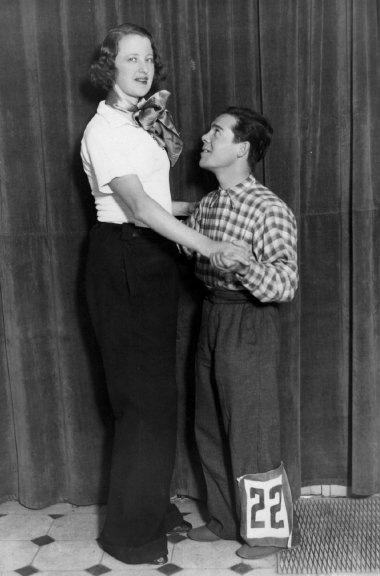29.09.23 — 10:00
CN D à Pantin
10:00 – 35 min.
A micro-historical overview of dance competitions in 16th-century Italy: gender, techniques, distinction
by Marina Nordera
In the 16th century, during festive gatherings in the north of Italy, men and women of the people performed in dances whose vocabulary was rich and technically complex. The competitive aspect of these events incited participants to elaborate steps by imitating others; the emulation and the challenges posed by a growing level of virtuosity in their execution attracted a diverse audience. Through a micro-historical approach, this study looks into a corpus of documents which allow us to retrace the organization of a dance competition involving peasant women. If competing means equally pursuing a similar goal, then here equality is negotiated in terms of gender, physical techniques and social distinction. In that perspective, as dance contributes to consolidate or challenge inequalities within the social interactive space of popular festivities, competition participates in the elaboration of technical knowledge in dance.
10:35 – 35 min.
The first dance competitions in the National Conservatory of Music and Oratory, 1928-1935
by Hélène Marquié
In a context where traditional academic dance instruction was increasingly criticized and influenced by other types of pedagogies and where the Paris Opera held a symbolic and an actual hegemonic position, dance instruction only started in the National Conservatory of Music and Drama in 1926 as a discipline in its own right. The first dance competition modelled after the music and drama ones was held in July 1928, and it was opened to the public (as it was for the other disciplines) in 1931. These competitions continued to be held even though dance instruction was taken off the curriculum in 1933 (Jeanne Chasles, followed by Jeanne Schwarz, still gave dance classes for free unofficially). My paper will examine the place of these competitions within the Conservatory, their rules, their successive juries; how the different parts of the competitions were organized and what they consisted in; which values and aesthetics they defended; the candidates and the prize-winners; and finally, how these competitions were received by the public and by dance professionals.
11:10 – 35 min.
1957. The first (and last) “Young Choreographers’ Competition” in Aix-les-Bains
by Guillaume Sintès
In 1957, the International Dance Festival in Aix-les-Bains hosted the first “Young Choreographers’ Competition”. This event could seem like a mere anecdote, but it isn’t: first, it was a decisive moment in the power relations between the almighty Serge Lifar and choreographers as well as journalists in France. Organized in the context of the passing of the law on intellectual property extending copyright to choreographers, the competition was the occasion for aesthetic as well as political debates. Finally, Lifar’s declining influence associated to a consensus on the international acknowledgement of copyright in dance created a context where a new generation of choreographers could emerge, and advocate for the necessity to rethink the way dance was organized as well as how necessary unions were to defend choreographic artists.
11:45 – 35 min.
Defending contemporary dance in a red suburb of Paris: the Bagnolet competition, a militant and popular event
by Mélanie Papin
Considered as the event which brought about the advent of New French Dance, the “Ballet for tomorrow”, also known as the Bagnolet Competition, created in 1969 by a former Opéra-Comique dancer, Jaque Chaurand (1928-2017), was born in the “red suburbs” of the northeast of Paris, which had had communist mayors since the early 1920’s and is home to a mostly working-class population. If most of the event happened on stage, the strong connection between the emerging contemporary dance and the local communist social and cultural policies fostered conversations between dancers around political and social issues in relation to the place of modern dance in France. This paper will investigate how a dance competition fosters militancy in the dance world, and what type of connections and conversations it can give birth to.
